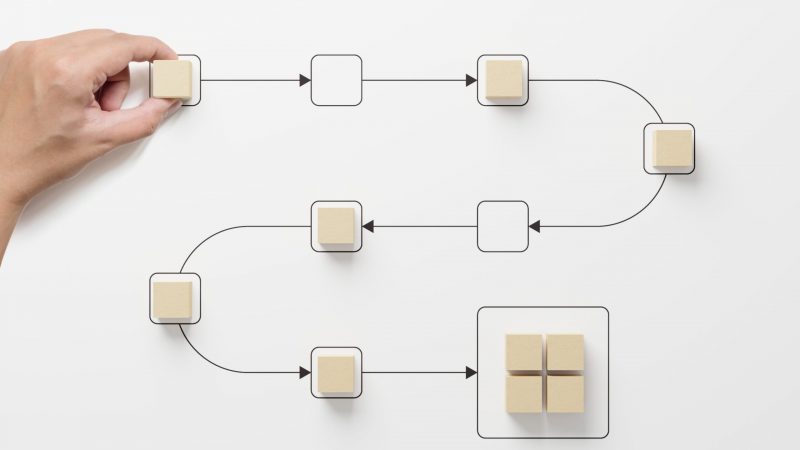The main goal of a comprehensive audit is to check how well an organization uses its resources in terms of being economical, efficient, and effective. These audits, also known as “value for money” audit critical risk areas and cover finances, following rules, how operations are run, and how management functions. They are thorough checks aimed at ensuring everything is working as it should and that resources are being used wisely.
After the Enron Scandal in 2001, the U.S. government made the Sarbanes-Oxley Act in 2002. This law made rules stricter for how public companies are governed. It set standards for how audits should be done, how ethics should be followed, and how independent auditors should be. The New York Stock Exchange also suggested that companies should have formal processes to check not only if they are effective, but also if they are honest in their financial reporting and how they are governed. They recommended that companies have audit committees made up of board members who aren’t part of the company’s management. These committees are in charge of making sure the auditors are doing their job properly.
Critical Risk Areas to Include in an Audit Plan
A comprehensive audit plan not only ensures compliance with regulations like Sarbanes-Oxley (SOX) but also addresses risks across the entire organization.
Here are the 5 Critical Risk Areas to Include in Your Audit Plan
1. Cybersecurity
A cybersecurity audit checks your computer systems to find problems and risks. It looks for weak spots that could let hackers in.
Cyberattacks are getting worse for businesses. By 2025, they could cost companies worldwide $10.5 trillion every year. That’s a huge amount of money!
Just having security plans isn’t enough. You need to check them often to make sure they still work well. When did you last update your plans? Do you review and change them to fit each part of your business?
If you’re not sure, it’s a good idea to do a cybersecurity audit in these areas:
- Data Encryption – Ensuring sensitive data is securely encrypted.
- Access Management Policies and Controls – Reviewing access controls to prevent unauthorized entry.
- Data Penetration Testing with Vendors –Assessing vendors’ ability to protect data through penetration testing.
- Business Continuity Plan (BCP) – Evaluating plans for maintaining operations during emergencies.
- Patch Management Policies – Ensuring timely application of software patches to fix security vulnerabilities.
- Employee Information Security Training – Assessing the effectiveness of training programs to enhance employee awareness.
2. Culture and Ethics
Ethics is important for all professionals, no matter their position or job. For internal auditors specifically, ethics can be especially tricky as they carry out their duties.
Internal auditors often face tough situations where they have to ask uncomfortable questions. The effectiveness of internal audits should be judged by their ability to tell the truth, even if it’s bad news, without worrying about negative consequences.
These are some recommended areas to include:
- Digital Ethics – Examining how the organization manages and protects consumer information.
- Succession Planning – Assessing plans for smooth transitions in key roles.
- Gender and Racial Discrimination – Evaluating policies and practices to prevent discrimination.
According to the Institute for Global Ethics (IGE), five core ethical values are universal across cultures: honesty, responsibility, fairness, respect, and compassion. These values guide how people should act in any situation.
3. Data Privacy
A data privacy audit, also known as a protection or compliance assessment, examines your website for first-party cookies, third-party cookies, and third-party requests. It helps see if your site follows privacy rules and shows if there’s a low, medium, or high risk of privacy issues.
This audit looks at how you gather, use, and share data to follow privacy laws and finds areas to improve. It decides if your site’s risk of breaking rules is low, medium, or high by considering things like how you get permission and your data security. It helps you see if your website uses cookies and trackers in a way that fits privacy laws.
We listed two sample areas to include in an audit project:
- General Data Protection Regulation (GDPR) Enforcement – Ensuring compliance with GDPR.
- Consumer Consent – Reviewing procedures for obtaining and managing consumer consent.
4. Data Governance
The first thing to do in a data governance audit is to check if your organization has a clear plan and rules for managing data. This plan should cover things like what your data goals are, who’s responsible for what, and how you measure success. It’s also important to see if everyone understands and follows these rules.
During the audit, you’d want to ask questions like:
- What are the main reasons we’re doing data governance?
- Who makes the important decisions about data?
- How do we keep track of who’s doing what?
- What rules do we follow to make sure our data is good, safe, and respectful?
- How do we know if our data management is working well?
For starters, try assessing these areas:
- Data Quality – Assessing procedures for maintaining data quality, especially during data migration and acquisitions.
- Data Analytics – Reviewing policies and controls around data analytics functions and access.
5. Third- Party Risk
Third-party risk means the danger of involving another company to do work for yours. Even though business owners hope these third parties are honest, it’s hard to be sure.
These outside companies could hurt your business by doing low-quality work or making it easier for hackers to attack your systems, either by mistake or on purpose to steal your information.
Following laws like GDPR and the California Consumer Privacy Act is crucial. If your third-party partner doesn’t follow these rules, your business could get fined, or even held responsible for the violation.
Here are some areas to check for Third-Party Risk:
- Background Checks – Assessing the thoroughness of background checks on third-party vendors.
- Third-Party Risk Management – Evaluating processes for identifying and mitigating risks associated with third-party relationships.
- Contract Management – Reviewing contracts to ensure adequate risk mitigation measures are in place.
- Right-to-audit Clauses – Ensuring contracts include provisions allowing the organization to audit third parties.
- Monitoring and Compliance – Assessing mechanisms for ongoing monitoring and ensuring compliance with third-party risk management protocols.



